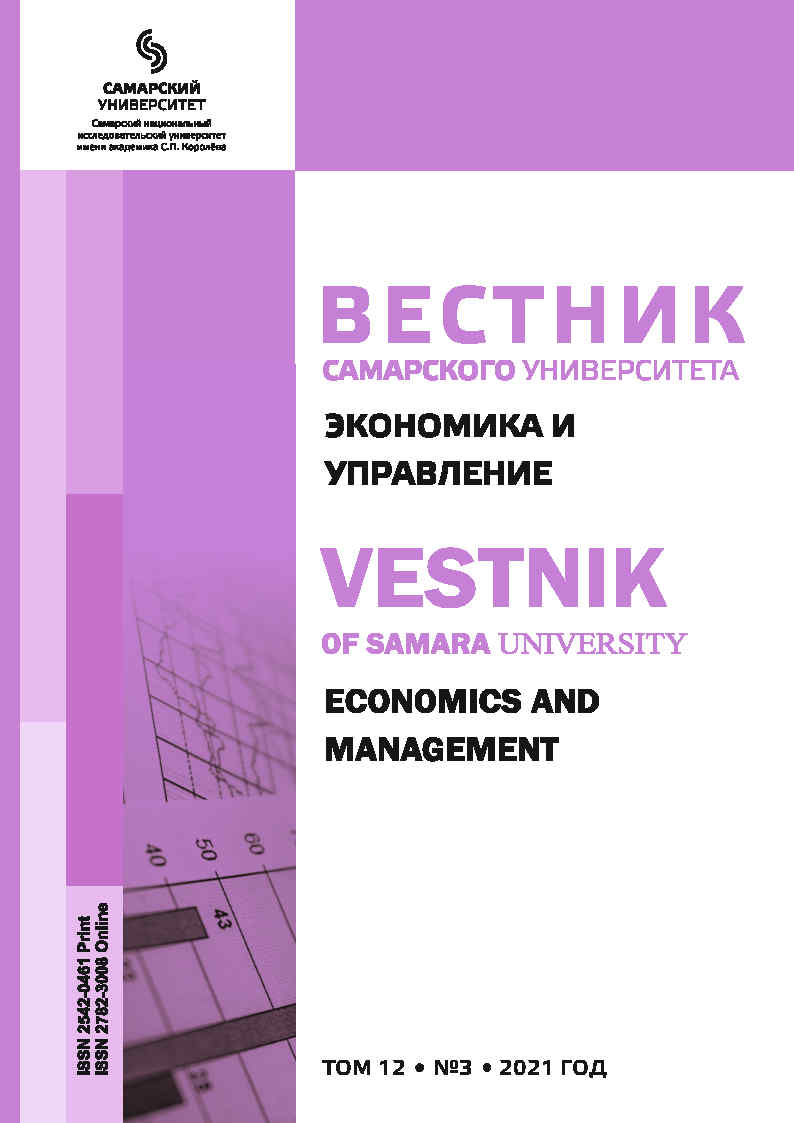Post-industrial development and the nature of deindustrialization in the world economy and economic security of Russia
- Authors: Noskov V.A.1
-
Affiliations:
- Samara State University of Economics
- Issue: Vol 12, No 3 (2021)
- Pages: 61-69
- Section: ECONOMICS
- URL: https://journals.ssau.ru/eco/article/view/9864
- DOI: https://doi.org/10.18287/2542-0461-2021-12-3-61-69
- ID: 9864
Cite item
Full Text
Abstract
The article evaluates the world experience of post-industrial development and deindustrialization in the economies of both developed and developing countries. The significance of the crisis of the post-industrial paradigm for the development of the world economy is indicated. The importance of applying this experience in the process of import substitution and the unfolding reindustrialization in Russia. The analysis of the world experience of post-industrial development and deindustrialization of the economy, its macro-regional features is carried out in the context of maintaining and developing Russia's economic security. The author's understanding of the problems and prospects of the development of import substitution and reindustrialization processes in the world is proposed. Import substitution is considered as part of the country's economic development and national security strategy.
About the authors
Vladimir Anatolyevich Noskov
Samara State University of Economics
Author for correspondence.
Email: noskov1962@inbox.ru
ORCID iD: 0000-0002-8890-8536
professor of the Department of World Economy
Russian Federation, 141, Soviet Army Street, SamaraReferences
- Bell D. The coming of post-industrial society: A venture of social forecasting. New York: Basic Books, 1973, 188 p. Available at: https://celz.ru/daniel-bell/527562-the_coming_of_post-industrial_society.html.
- Aleksakha A.G. Demographic factor in economic history. ANTRO, 2014, no. 1 (14), pp. 17–28. Available at: https://elibrary.ru/item.asp?id=21164174. (In Russ.)
- Inozemtsev V.L. On the theory of post-economic social formation. Moscow, 1995, 256 p. Available at: https://booksee.org/book/769348. (In Russ.)
- Sukharev O.S. Economic policy of reindustrialization of Russia: opportunities and limitations. National Interests: Priorities and Security, 2013, vol. 9, no. 24 (213), pp. 2–24. Available at: https://elibrary.ru/item.asp?id=19098680; https://inecon.org/docs/suharev/ni2413-02.pdf.
- Bagdasarian V.E. Risks and threats of the servicizing Russia in the frame of postindustrialism. Electronic journal "Bulletin of Moscow Region State University / www.evestnik-mgou.ru, 2013, no. 2, p. 29. Available at: http://evestnik-mgou.ru/ru/Articles/Doc/349; https://elibrary.ru/item.asp?id=20178532. (In Russ.)
- Industry, value added (% of GDP) – World Bank Data. Available at: http://data.worldbank.org/ indicator/NV.IND.TOTL.ZS?view=chart.
- Services, etc., value added (current US$)) – World Bank Data. Available at: http://data.worldbank.org/ indicator/NV.SRV.TETC.CD?locations=US&view=chart
- Source: Services, etc., value added (current US$)) – World Bank Data. Available at: http://data. worldbank.org/indicator/NV.SRV.TETC.CD?locations=US&view=chart.
- GDP growth (annual %) – World Bank Data. Available at: http://data.worldbank.org/ indicator/NY.GDP.MKTP.KD.ZG?view=chart.
- Yakunin V.I., Sulakshin S.S., Bagdasaryan V.E., Kara-Murza S.G., Deeva M.V., Safonova Yu.A. Postindustrialism. Experience of critical analysis. Moscow: Nauchnyi ekspert, 2012, pp. 8–9. Available at: https://russiaindustrialpark.ru/sites/default/files/postindustrializm_-_opyt_kriticheskogo_analiza.pdf. (In Russ.)
- Bodrunov S.D. Reindustrialization. Round table in the Free Economic Society of Russia. The world of new economy, 2014, no. 1, pp. 11–26. Available at: https://elibrary.ru/item.asp?id=21406417.
- Zhironkin S.A. Technological determinant of Russian economy overcoming of structural desocialization. Russian Journal of Economic Theory, 2015, no. 4, pp. 14–23. Available at: https://elibrary.ru/ item.asp?id=25064473. (In Russ.)
- Reiter T. Another attempt: Import substitution in the real sector. Magazine "Industrial and Construction Review", May 2015, no. 164. (In Russ.)
- Arseenko A., Petrushyna T. USA and Ukraine: scenarios of deindustrialization. Sotsiologiya: teoriya, metody, marketing, 2014, no. 2, pp. 23–47. Available at: http://dspace.nbuv.gov.ua/bitstream/handle/123456789/90562/02- Arseenko.pdf?sequence=1. (In Russ.)
- Germany: GDP – COMPOSITION BY SECTOR. The World Factbook. Central Intelligence Agency. Available at: https://www.indexmundi.com/germany/gdp_composition_by_sector.html.
- The industrial revolution returns production to Europe. UNIDO in Russia, 2013. Available at: http://www.unido-russia.ru/archive/num11/art11_20/. (In Russ.)
- Industry, value added (% of GDP) – World Bank Data. Available at: http://data.worldbank.org/ indicator/NV.IND.TOTL.ZS?view=chart.
- Saritskiy B.E. Europe: Reindustrialization vs. Deindustrialization. Economic Sciences, 2014, no. 117, pp. 169–175. Available at: https://elibrary.ru/item.asp?id=23069967; https://ecsn.ru/files/pdf/201408/201408_169.pdf. (In Russ.)
- OECD. Available at: http://www.oecd.org.
Supplementary files










